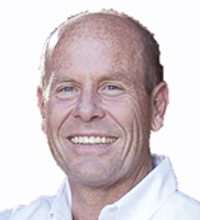Are you ready for the big client who orders a geo system?
Now, more than ever, we need to be ready to install geothermal HVAC systems.
We’ve all been caught on our heels by a client's request to install a product we were not trained to install. If you haven’t already, you will be asked to install a geothermal heating and cooling system.
When considering a new or replacement heating and cooling systems in New York City, city-owned buildings will have to undergo a cost efficiency analysis to determine favorability of geothermal systems, according to Int 0609-2015. Most projects, if not all will qualify for geothermal heating and cooling systems under this new legislation. This kind of lawmaking comes as a result of dedicated organizations' remarkable efforts.
The International Ground Source Heat Pump Association (IGSHPA) and the Geothermal Exchange Organization (GEO) are the two entities that oversee, promote and regulate the geothermal heating and cooling industry. GEO and IGSHPA work together to promote industry legislative efforts nationally, supporting national standards and training efforts and the local organizations active with geothermal technologies. But, IGSHPA and GEO can only do so much.
NY-Geo is one of many state-based organizations that is taking geothermal HVAC promotion to the next level. NY-Geo has members with various connections in government and industry that help place the right geothermal solutions in front of the right people at the right time. In fact, NY-Geo has had tremendous penetration and success, contributing to landmark legislation requiring government to use geothermal systems wherever it is cost-effective (such as NYC Int 0609-2015 mentioned above).
Geothermal HVAC systems are installed regularly in tight urban spaces such as NYC using both standardized and more creative methods. Trevor Day School in NYC placed geothermal piping in the building’s foundation pilings. That’s safe and permanent.
William F. Buckley Middle School in Valley Stream, New York used city water mains to provide the source for the geothermal heat pumps (GHPs) that serve the school’s 40,000 square foot needs. This kind of forward thinking is a collaboration of geothermal advocates, the public service commission and public utility companies. The list of buildings heated and cooled by GHPs goes on to include millions of installations, some of which are situated in the most difficult locations.
According to the Digital Journal, the global geothermal heat pumps market was valued at $55.3 billion in 2014 and is expected to reach $130.5 billion by 2020. The growth and standardization GHPs is inevitable. In addition to holding the prestigious position as the most efficient heating and cooling technology, geothermal systems are the only reasonable way to reduce and eliminate combustion heating. CO2 emissions/combustion heating reduction benchmarks are in the law books of numerous cities and states, and the list is growing fast. The day will come when geothermal will necessarily be the minimum standard for new construction, primarily because it may be the only heating technology that can reasonably reduce or eliminate the need for combustion heating.
Geothermal pipelines are permanent infrastructure
Geothermal systems have a return on investment (ROI) that varies with complexity and geology, often coming in at five to 10 years or more. New legislation takes a more realistic look at these variables, extending consideration to the long life and the elimination of combustion heating and related emissions provided by geothermal installations.
Geothermal loops are similar to other types of infrastructure on which we have come to depend such as water mains and electrical power grids. Geothermal loops deliver thermal energy used for heating and cooling, and have construction standards in place that ensure long life. This geothermal infrastructure is designed to outlast the heating and cooling equipment inside the building by a wide margin, making future upgrades and replacements cost-effective by any standard.
There is no question that the life span of a geothermal loop far exceeds the life of the geothermal heat pump. The Department of Defense (DOD) just upgraded their estimated life span for loops by another 10 years (Link- p16). With no outside/exposed equipment or cooling towers, it’s obvious the DOD (or anyone else) would favor the reduced vulnerability that geothermal HVAC systems can provide.
NYC may be among the tightest places in the U.S. (speaking of available land in which to place a geothermal loop), and this fact might have made them (NYC) among the last to consider making geothermal heat pumps part of the solution. Instead NYC Council Speaker Melissa Mark-Viverito recently stated, “As a clean, renewable source of power, geothermal heat is exactly the type of innovation that will help New York become a greener, more sustainable city.”
Take the next step toward HVAC success
Become a member of IGSHPA and GEO. Get involved with your local geothermal organizations. It’s likely that they have events and opportunities that will place you in front of the right architects, engineers, developers and public officials. Become trained and certified on geothermal technologies.
NY-Geo is having their annual conference on April 19-20 in Albany. No matter where you live, conferences like this provide rich opportunities to engage and interact with professionals who will provide opportunities and ideas that will benefit your efforts.
I’ll see you there!
Jay Egg is a geothermal consultant, writer and the owner of EggGeothermal. He has co-authored two textbooks on geothermal HVAC systems published by McGraw-Hill Professional. He can be reached at jayegg.geo@gmail.com.





